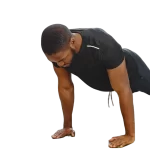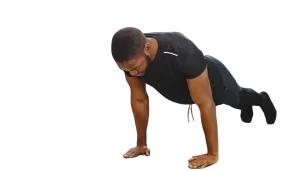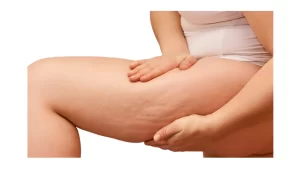Mindfulness is a form of meditation that literally means “full awareness”
Part of the idea is that our mind is a machine that generates constant thoughts automatically and thoughtlessly, and that we live in reality full of stimuli that scatter us and make us forget ourselves.
Meditation/mindfulness exercises for adults have numerous benefits, such as reducing stress levels, and structural changes in our brain, increasing gray matter, improving our cognitive capacities such as working memory, and verbal reasoning, and stimulating creativity.
It also protects us from mental illnesses, gives us a broader vision of reality, prevents somatic physical illnesses, calms pain, helps us sleep better, and makes us happier and more compassionate people
Here are some simple Mindfulness exercises for adults.
1. Watch your thinking
Eastern meditation aims to make the mind blank, stopping all kinds of thoughts.
However, in our current society this goal is too unattainable at first, so mindfulness tries to play with attention, focusing it on something specific and thus slowing down the swaying of thoughts and dispersion.
For example, you can perform the previous breathing exercise and in that case, the element that you will focus on to leave others aside will be your own breathing.
Try to be fully aware of it, and you will notice that while you do it, intrusive thoughts will indeed cross the mind that tries to disconnect you from the present moment.
The present moment is nothing more than what is happening while you breathe, instead, the thoughts will take you to the past or the future. Don’t worry, give yourself understanding and gently try to return your attention back to your breath.
The mind has the peculiarity of being able to observe itself, and the more you practice these exercises, the more understanding you will have about yourself, the more control you will acquire, and the easier it will be for you.
2. Identify your emotions.
Surely not only thoughts will disperse your attention since in most cases these are accompanied by emotions.
In our day-to-day life, we are exposed to a large number of events that cause us emotional reactions, and most of us carry a heavy backpack of emotions that, in large part, we have managed to repress and mask to make it easier for us to continue with our lives.
We look for distractions or keep ourselves busy so we don’t have time to think about them. It is for this reason that, the moment we are alone, in silence, and let our guard down, those accumulated emotions can spontaneously re-emerge and remind us that they are still alive
It is common that the first time we practice mindfulness we feel discomfort, sadness, and even anxiety, contrary to what we think it should be (relaxing). It’s totally natural, and it shouldn’t scare or discourage you from continuing.
To clean, one first has to deal with dirt, and it is the first thing we usually find, by removing everything that we have managed to try to hide it from.
One of the techniques that can help you cope with these emotions is to observe how they are, and how they feel, without trying to repress or eliminate them.
When we name something, we make it more manageable and less strange to us. In that way, we will be better able to master emotions, instead of being dominated by them.
3. Use visualization.
Next in Mindfulness exercises for adults is use you visualization. The mental world is too abstract and, accustomed to the world of more sensory stimuli, we can often get lost. Using visualization techniques will provide you with mental control to generate a state of relaxation and be able to better manage the thoughts and emotions that arise.
In our minds, we have a very wide register of sensations linked to certain images, objects, textures, colors, etc. Just the act of thinking about something activates the areas related to its activities in the brain, so thinking about activities or places, for example, that awaken pleasant and calm sensations in us, will help us bring those sensations to the present.
You can also start generating new associations during meditation so that when you enter a relaxed state that you feel comfortable with, you can memorize it by associating a shape, or color so that the next time you practice mindfulness you visualize that shape. to immerse yourself again in the state of relaxation that you achieved.
4. Deep breathing mindfulness exercises for adults
One of the most used forms of relaxation techniques, including mindfulness, is based on bringing attention to the breath.
Breathing is a cyclical act that is in a constant flow, it keeps us alive and connected at all times with the present, in an unequivocal union of our body with the air that surrounds us.
Normally we breathe automatically and unconsciously, however breathing is the main form of nutrition for our body, so becoming aware of it and being able to modulate it will give us greater self-control over ourselves.
- Lie on your back on a stable, rigid surface, preferably as close to the ground as possible.
- Place one hand on your chest, at the height of your heart, and the other on your belly. You can put some music to meditate or relaxing music or be silent.
- Close your eyes and begin to inhale through your nose, trying to bring the air into your belly, feeling how it swells (diaphragmatic breathing).
- Once your belly has swollen, just fill yourself up by expanding the capacity towards your chest as well. Do it slowly, counting the seconds, holding your breath for 2 seconds,
- Begin to breathe out slowly through your mouth for the same seconds it took you to breathe in.
- Repeat this process for a few minutes.
5. Be aware of your body.
Our emotions often hide behind our bodies in the form of bodily sensations.
Our body is still a kind of container that contains everything, and sometimes we don’t even know what’s happening to us because our mind (that organ that seems to act independently and that we strive to control) hides certain things so that they don’t upset us, but they are transformed into muscular tensions, skin problems, digestive problems, etc.
So when you practice mindfulness, pay close attention to your body. Observe all of you, as a kind of machinery with extremely complex and intelligent protection strategies that, however, you try to understand to help you in the task that these automatic mechanisms try to accomplish.
Take a position of compassion towards yourself, and without judging or blaming yourself, observe yourself and try to understand yourself.
Notice how certain thoughts will generate certain physical sensations, and gently try to assist your breath so you don’t worry about it.
Do the above mentioned mindfulness exercises for adults, Forgive yourself even for those unpleasant sensations, and taking you to that present moment in which nothing is more important than the fortune of being alive and feeling everything you feel.
FAQs regarding Mindfulness exercises for adults
Ans: from many researches carried out in recent days; it is evident that one can not afford to skip the option of taking some time clear the mind
- Stop other things and opt to go put for some walk.
- Open a book you like and read a few pages !
- Doodle.
- Try some mindful breathing or do a guided meditation .
- another good option to clear out the mind could be a quick nap!
Q:How do you apply mindfulness in everyday life?
Mindfulness is simply to be present, at the moment. It can be done while sitting in a chair, while drinking a cup of tea, eating your food, holding your baby, working at the computer or having a chat with a friend and so on…..









